Nam Dinh Newspaper respectfully introduces to readers some presentations by experts, scientists, local leaders and businesses at the workshop. The presentations focused on in-depth analysis and clarification of the outstanding potentials and dynamic advantages of the new development space after the merger of the three provinces of Ha Nam, Nam Dinh and Ninh Binh. In particular, it emphasized the key role of innovative thinking and creative actions of the leadership team in opening up development opportunities, creating positive resonance effects, promoting comprehensive and sustainable development for this land rich in cultural and historical traditions.
Hopefully, through this, readers will have more comprehensive and in-depth information about the stature, significance and new vitality of the Ha Nam - Nam Dinh - Ninh Binh sub-region in the economic - urban space of the Red River Delta.
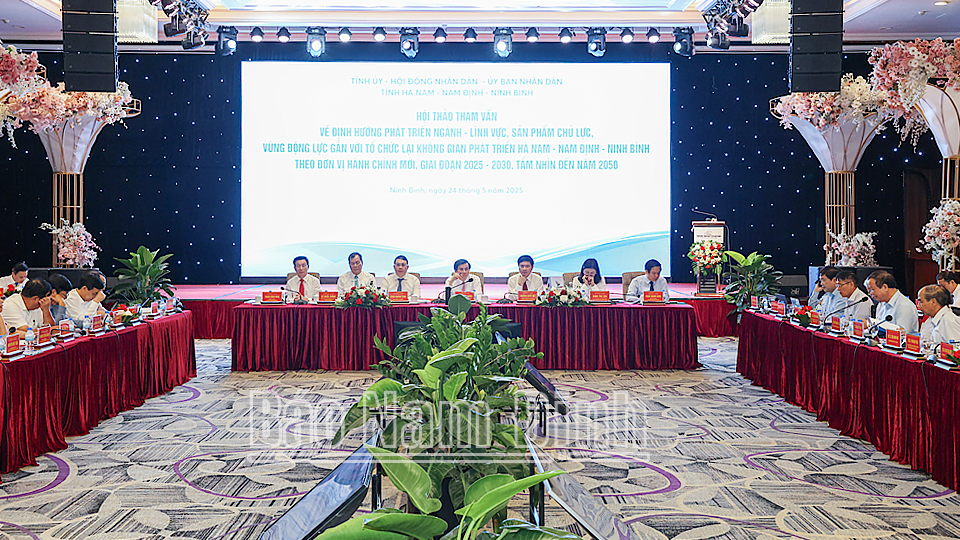 |
| Conference scene. (Photo by Viet Du) |
Forming an economic-urban linkage axis of Ha Nam - Nam Dinh - Ninh Binh
Architect Tran Ngoc Chinh
(Chairman of Vietnam Urban Planning and Development Association, former Deputy Minister of Construction)
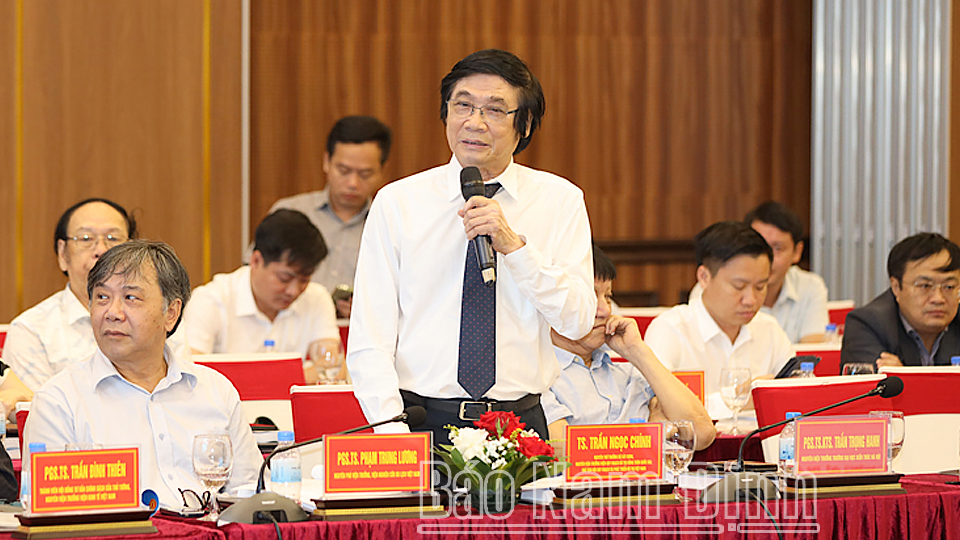 |
The merger of the three provinces of Ha Nam, Nam Dinh and Ninh Binh is not only a major turning point in administrative organization but also opens up a strategic inter-regional development space, forming a new dynamic center in the South of the Red River Delta (RD). With an area of nearly 4,000 km2, a population of over 4.4 million people and a GRDP expected to exceed VND 310 trillion in 2024, the new administrative unit named Ninh Binh has great potential to break through on the national economic map.
The similarities in geographical location, culture, economy and infrastructure between the three provinces are a solid foundation for restructuring the regional development space. The merger creates conditions to promote strong connections between urban, industrial, agricultural and marine economic areas, focusing on promoting the role of the "strategic coastal region" Nam Dinh - Ninh Binh. Ha Nam, with its advantages as a logistics, processing and human resource training center, will make an important contribution to the overall development picture. According to the Red River Delta Regional Planning to 2030, with a vision to 2050, this inter-region will become the driving force of the southern delta, focusing on developing processing industry, high-tech agriculture, marine economy and tourism. Each province plays a specialized role, complementing each other: Ha Nam aims for high-tech industry, logistics and becoming a gateway city to the south of Hanoi; Nam Dinh develops marine economy, textiles, craft villages and education - culture; Ninh Binh focuses on developing heritage tourism, mechanical industry and high technology. In terms of urban space, centers such as Phu Ly, Nam Dinh and Hoa Lu will be the core of the Phu Ly - Nam Dinh - Tam Diep regional development axis, each with its own distinct role: Phu Ly is the administrative, industrial and logistics center; Nam Dinh is the service, light industry, healthcare and education center; Hoa Lu plays the role of the heritage, tourism and ecology center.
Shaping a multi-center urban network for sustainable development
After the administrative unit merger, the Ha Nam - Nam Dinh - Ninh Binh region will form a multi-center, highly specialized urban network, closely connected through strategic infrastructure corridors such as the Phap Van - Cau Gie - Ninh Binh expressway, National Highway (QL) 1, QL 10 and the CT.08 coastal expressway. Hoa Lu city (on the basis of the current Ninh Binh urban area) is oriented to be the administrative - political, cultural and tourist center of the new province. With the goal of reaching the standard of a type I urban area, Hoa Lu will be a place where provincial-level administrative facilities, high-quality cultural, educational and medical institutions converge, and especially the center for exploiting the heritage value of Trang An - Hoa Lu Ancient Capital - Tam Coc - Bich Dong.
Three dynamic urban poles, forming a "development triangle" linked along strategic infrastructure axes (Phap Van - Cau Gie - Ninh Binh Expressway, National Highway 10, CT.08 coastal expressway), including: Phu Ly (Ha Nam): Strategic industrial and logistics urban area, close to Hanoi, modern infrastructure. Continue to develop Dong Van I-IV Industrial Parks, aiming to become a center for supporting industry, agricultural processing and high-tech logistics in the region. Nam Dinh (Nam Dinh): Play the role of a coastal economic - comprehensive service center, strongly developing the textile, mechanical and food industries. In particular, Ninh Co Port and Ninh Co Economic Zone will be a large-scale logistics - comprehensive seaport hub serving the entire Red River Delta. Hoa Lu (Ninh Binh): A regional cultural - eco-tourism - heritage center, aiming for the model of "Millennium Heritage City" with its own identity, internationally competitive in the tourism and creative economy. In addition, Tam Diep is oriented to develop industry, transportation and transit trade.
After the merger, the new province needs to strengthen the connection of satellite cities, forming a multi-center urban network of Ha Nam - Nam Dinh - Ninh Binh. Type III and IV urban areas such as Duy Tien (Ha Nam), Y Yen (Nam Dinh), Yen Khanh, Kim Son (Ninh Binh) and a series of district towns such as Phat Diem, Quy Nhat, Binh Minh, Vu Ban, Xuan Truong, Nho Quan, Me... play the role of satellites, supporting the central urban areas, creating a balanced development. These urban areas are oriented to develop according to specific industries such as craft villages, smart agriculture, small-scale industry and community tourism services. Craft village urban areas are a new strategic orientation, with the goal of restructuring traditional production spaces, forming specialized craft village urban clusters, integrating into the regional industry - trade - tourism value chain. This model combines production development, preserving cultural identity and promoting rural tourism, creating a typical agricultural - ecological - craft village area associated with OCOP products and inter-provincial development corridors.
In particular, it is necessary to orient the organization of the development of the heritage corridor - marine economy - sea-encroaching urban area. In particular, the cultural - ecological space throughout the three provinces is reorganized according to the corridor: Tam Chuc - Bai Dinh - Trang An: Spiritual - ecological tourism; Phu Day - Tran Temple - Kim Son: Festival - cultural beliefs; Giao Thuy - Kim Son: Community tourism - ecological mangrove forest. The marine potential of Nam Dinh - Ninh Binh is exploited through the sea-encroaching urban model in the Day - Ninh Co estuary area (2,000-3,000ha), forming an integrated center of seaport - logistics - industry - modern urban area, in line with sustainable development criteria. At the same time, the Hai Hau - Giao Thuy sea area is planned to become a complex of urban areas for marine tourism, smart agriculture and ecological economy.
Prioritize upgrading transport infrastructure and planning regional airports.
Upgrading the main traffic infrastructure is an immediate priority, and it is necessary to propose a regional airport planning. In which, the inter-regional traffic system is the key foundation. North-South Expressway, National Highway 1A, National Highway 14, National Highway 10, National Highway 21B: Synchronously upgrade, effectively connect between development poles. Ninh Binh - Hai Phong Expressway (PPP): Create a connecting corridor with Lach Huyen Port and Cat Bi and Van Don airports. North-South high-speed railway: Three strategic stations located in Phu Ly, My Loc, Yen Mo. In addition, the proposal to plan a regional airport in Ha Nam - Nam Dinh - Ninh Binh is considered a strategic step, aiming to enhance regional connectivity and access national and international economic and tourism centers. The airport not only serves transportation but is also a driving force for restructuring urban, industrial, service and tourism spaces. In particular, Ý Yên (Nam Định) is considered the optimal location for regional airport planning, with advantages in central location, connecting infrastructure and potential to form a modern airport city.
The formation of the economic-urban linkage axis of Ha Nam - Nam Dinh - Ninh Binh is a strategic breakthrough, creating a dynamic sub-region, enhancing the competitiveness of the Red River Delta. Promoting individual strengths: Ha Nam with industry - logistics; Nam Dinh with marine economy - textiles - agriculture; Ninh Binh focusing on heritage - tourism - construction materials. Synchronous planning, expanding marine space and developing modern infrastructure are key to a multi-center, unique and sustainable urban chain.
-------------------------------------------
Ninh Binh marine economy after merger:
Break out from new space
Assoc.Prof.Dr. Nguyen Chu Hoi
(National Assembly Delegate, XVth tenure; Permanent Vice President of Vietnam Fisheries Association)
Sustainable development of the marine economy (MEE) has become the guiding ideology of the Party, consistently demonstrated through the Congresses. From Resolution 09-NQ/TW (2007) to the Strategy for Sustainable Development of the MEE of Vietnam to 2030, with a vision to 2045 (issued in 2018), Vietnam clearly defined its goal: to become a strong maritime nation, developing sustainably on the basis of green growth, ecological conservation and effective response to climate change.
The 2030 Marine Strategy emphasizes the harmonious adjustment between development and conservation, between economy and national security, between socio-culture and ecological environment. Vietnam will develop traditional marine economic sectors in a sustainable manner, encourage renewable energy, conserve biodiversity, expand marine protected areas and develop ecological marine urban areas. In particular, this strategy is associated with goal 14 of the United Nations 2030 Agenda on the conservation and sustainable use of marine resources. This is the fundamental orientation for coastal localities such as Ninh Binh (after the merger) to concretize into marine economic development planning suitable to their advantages, contributing to the implementation of national goals on sustainable development.
Outstanding advantages from extensive coastline and diverse territorial structure
After the merger, the newly formed Ninh Binh province has an area of about 3,942.6 km2 and a population of over 3.8 million people. Its geographical location bordering the sea, adjacent to the capital Hanoi and possessing 3 large cities (Nam Dinh, Phu Ly, Hoa Lu) creates favorable conditions for the formation of three intra-regional growth poles, effectively connecting with the capital region and the Northern dynamic axis.
The sea and coastal space has expanded nearly 5 times compared to the old Ninh Binh province, with the coastline increasing from 15km to more than 88km, reaching out to the Gulf of Tonkin - North East Sea. This is an outstanding advantage for developing a multi-sector marine economy such as eco-cultural tourism, aquaculture, seaport services and renewable energy. The province has a diverse territorial structure with 25% of the area being the western mountainous region, 72% being the plain and about 3% being the coastal - delta area. The coastal terrain is mainly a sea-encroaching delta, continuously deposited by the alluvial flow from the Red River and the Day River, especially at river mouths such as Ba Lat, Ha Lan, Lach Giang, Day, Lach Can, which receive abundant alluvial flow from the Red River and the Day River basins.
The avan-delta space - the flooded area in front of the delta, rich in nutrients, plays a supporting role for the mainland delta, and needs to be strictly protected from excessive exploitation of mud and sand. The offshore Tonkin Gulf continental shelf of the province has rich fishing grounds and potential resources of oil and gas, ice, and placer minerals. Along the coast, the wetland ecosystem, with breeding grounds, spawning grounds, and international bird sanctuaries, creates a foundation for green economic development, biodiversity conservation, and sustainable tourism. This is also a traditional area for salt production, aquaculture, sedge cultivation, and sea encroachment for production. This area is also located in the core zone of the Red River Delta Biosphere Reserve, with Xuan Thuy National Park being an international RAMSAR site, a global highlight for delta ecological conservation. These natural values and geo-economic advantages create the foundation for Ninh Binh to build a sustainable KTB development strategy, playing a driving role in the growth axis of the Northern coastal region.
The new Ninh Binh province will have four coastal districts including Giao Thuy, Hai Hau, Nghia Hung and Kim Son. The coastal area has weak soil, sandy alluvial soil, salinity and some areas are flooded with acid sulfate soil, but it is also a land with great potential due to continuous alluvial deposition from the Red River and Day River. As a result, the alluvial land fund has increased rapidly in river mouths such as Giao Thuy, Nghia Hung and Kim Son. However, serious erosion is occurring in Hai Hau, especially the Van Ly - Cho Con section, at a rate of 20-30m/year. The cause may be geological faults and sediment shortages, requiring comprehensive solutions in terms of construction and ecology, in accordance with the natural evolution of the delta.
Sustainable development solutions: Natural resource exploitation, climate adaptation
Before the merger, the efforts to develop the KTB were mainly undertaken by Nam Dinh, with a GRDP growth rate of 7.7% in 2021, ranking 11th in the country. However, in general, the growth rate is still slow and lacking breakthroughs. Currently, the old provinces all have development plans for the period 2021-2030, with a vision to 2050, with a clear orientation for the KTB. A bright spot is the Ninh Co BKZ, covering nearly 14,000 hectares at the mouth of the Ninh Co River (Hai Hau - Nghia Hung of Nam Dinh), focusing on developing seaports, shipbuilding industry, logistics and tourism. Coastal traffic is being synchronously connected with key routes such as National Highway (QL) 10, National Highways 21A, 37B, 38B, Ninh Binh - Hai Phong and Cau Gie - Ninh Binh expressways.
To sustainably develop Ninh Binh Economic Zone after the merger, it is necessary to focus on 3 principles: promoting advantages - overcoming disadvantages - comprehensive transformation. Accordingly, a number of major groups of solutions are proposed. Regarding infrastructure: Synchronously investing in coastal traffic, restoring mangrove forests, creating a "green belt" to respond to climate change. Regarding development space: Building urban growth poles in Hoa Lu, Nam Dinh, Phu Ly; developing a chain of coastal ecological urban areas. Regarding industry and energy: Prioritizing environmentally friendly industries, wind power, logistics services and deep processing. Regarding institutions and technology: Applying flexible mechanisms in economic zones, attracting foreign investment. Regarding conservation and sustainable livelihoods: Developing economic models associated with conservation, seaweed farming, medicinal aquatic products, and recreational fishing. Regarding ports and logistics: Building ports according to national planning, central fishing wharves, applying advanced processing technology. Regarding management and security: Implement coastal and marine management in an inter-sectoral and inter-regional manner, linking development with national defense and security.
From the existing foundation, if properly planned on the basis of integrating the three provinces, taking advantage of its position in the "development quadrilateral" of Hanoi - Quang Ninh - Hai Phong - Thanh Hoa, Ninh Binh province's economic zone can completely break through, becoming a new growth pole and a driving force for the entire coastal region of the southern Red River Delta.
------------------------------------------
Developing cultural industry associated with preserving and promoting heritage in new administrative space
Associate Professor, Dr. Nguyen Thi Thu Phuong
(Director of Vietnam Institute of Culture, Arts, Sports and Tourism)
 |
Developing cultural industry (CNVH) associated with preserving and promoting heritage values is becoming a strategic direction in the context of cultural globalization. For Ninh Binh province in the new administrative space, this is a great opportunity to become a dynamic CNVH center of the Red River Delta (RD).
Positioning Ninh Binh as the cultural industrial center of the Red River Delta region
The new administrative space of Ninh Binh province has an area of nearly 4,000 square kilometers, a population of more than 4.4 million people, with the center located in Hoa Lu city, the land that was once the first capital of Dai Co Viet state. This is a locality rich in cultural resources and heritage, with the potential to become a "creative core area" to promote the development of cultural industry. Currently, Ninh Binh owns more than 1,800 relics with 379 ranked relics, including 3 special national relics and 1 mixed cultural - natural world heritage, Trang An Scenic Landscape Complex. In addition, the province has up to 430 intangible cultural heritages, creating a rich foundation for the development of fields such as performing arts, festivals, creative tourism, design, cuisine, cinema, etc.
The province's cultural ecosystem is also strongly supported by the majestic natural landscape, cave system, limestone mountains, Cuc Phuong National Forest and unique tangible and intangible cultural values associated with the ancient capital of Hoa Lu. Statistics show that the cultural and industrial sectors are contributing significantly to the province's GRDP. The tourism industry, the pillar of the cultural and industrial sectors, has grown impressively with revenue in 2023 reaching over VND 6,500 billion, an increase of nearly 12 times compared to 2010. The accommodation and catering industry in 2023 contributed about 3.1% of the province's GRDP, an increase of 5.2 times compared to 2010. Industries such as performing arts, fine arts, advertising, television, cinema and digital games are also having positive movements. The added value of the advertising and communications industry increased 2.42 times compared to 2010; The information and communication industry is identified as a creative force with high labor productivity.
Based on its existing potential, Ninh Binh aims to become a new cultural industry center, positioning Hoa Lu city as a "creative core area", a media arts center associated with creative cities such as Hanoi, Hoi An, Da Lat, Ho Chi Minh City. The province identifies cultural industry as an important economic sector, creating momentum for growth, employment and innovation; a tool for preserving and promoting heritage; and at the same time a channel to enhance cultural soft power, positioning local brands on the regional and international map. The goal by 2035, with a vision to 2050, is that Ninh Binh will form a network of heritage parks, developing key industries such as cinema, fashion, design, games, fine arts, literature - publishing, festivals and event organization. The restructuring of urban heritage spaces such as Hoa Lu and Ninh Binh city will create a creative ecosystem, promoting start-ups and cultural innovation.
Regional linkage - a lever for developing cultural value chains
Ninh Binh does not develop alone. In the space linked with Nam Dinh and Ha Nam, two localities rich in heritage, the cultural industry will together form an inter-regional value chain. Ha Nam owns more than 1,800 relics, notably Ba Danh Pagoda, Tran Thuong Temple, Tam Chuc scenic spot; tourism is growing strongly with 4.7 million visitors in 2024 and is honored as the world's leading cultural destination. Nam Dinh, a traditional "land of learning" with more than 1,300 relics, more than 100 traditional craft villages, a dynamic team of artists and writers with thousands of literary and artistic works each year. Linking the three provinces will create a special cultural - heritage space, opening up a new cultural consumer market, serving the development of creative tourism and sustainable cultural industry.
To develop the new Ninh Binh province's cultural industry, it is necessary to focus on implementing 3 groups of strategic solutions including: Building a project to develop cultural industry associated with medium and long-term local planning: Creating a cultural industry map integrating heritage, tourism and creative space. Applying digital technology (Creative Map App, open data); building a chain of experiences - promoting - investing in products associated with heritage. Prioritizing investment in industry, regional and international linkages: Mobilizing investment resources for creative spaces, cultural tourism centers, digital museums, cinemas, VR... Applying preferential tax policies, low-interest loans, supporting cultural startups, encouraging public-private partnerships. Participating in the comprehensive creative cycle of cultural industry: From research and development, production, promotion to commercialization and reinvestment. Building a "creative cycle" to promote sustainable innovation: talent search - creation - production - marketing - consumption - reinvestment.
To realize the goal, Ninh Binh province needs to develop a specialized resolution on the development of cultural industry in the period of 2025-2035, with a vision to 2050. At the same time, establish a Creative Advisory Committee and operate a Creative Fund to support businesses, artists, and the creative community.
---------------------------------------------
Connect to lead digital transformation
Prof. Dr. Tran Tho Dat
(Former President of National Economics University)
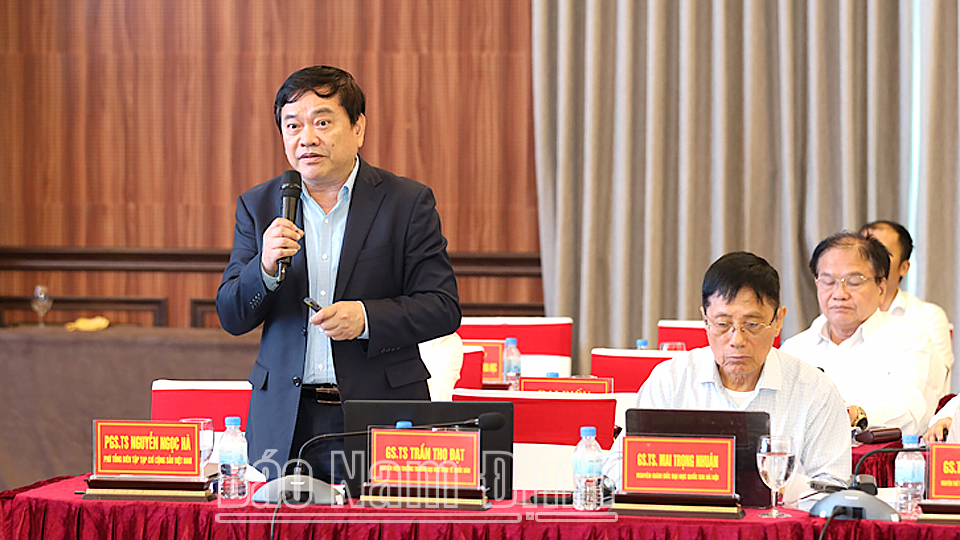 |
In the context of global digital transformation, Vietnam has identified the digital economy (DECO) as one of the key growth drivers. The administrative merger of the three provinces of Ha Nam, Nam Dinh and Ninh Binh to form the new Ninh Binh province is a strategic move, not only to restructure the management apparatus, but also to create a regional DECO development space with unprecedented scale and depth.
Land of potential convergence
Although the three provinces of Ha Nam, Nam Dinh and Ninh Binh have different development characteristics, they complement each other ideally in the digital transformation process. Ha Nam is a locality with GRDP growth of over 10% for many consecutive years, notable for its processing and manufacturing industry and the proportion of the digital economy reaching 13.68% (in 2024), among the highest in the country. Nam Dinh has a population of nearly 2 million people, possesses a young workforce, and a developed education system that is the foundation for innovation and knowledge industry. Ninh Binh strongly develops tourism and services, and is one of the leading localities in digitalizing public services and tourism e-commerce. In summary, this merged region not only has geographical advantages and inter-regional infrastructure connections, but also fully converges the factors: industry - services - human resources, forming a multi-polar, multi-disciplinary digital ecosystem.
Statistics show that the Red River Delta (RD) currently accounts for nearly 27% of the national KTS proportion. This proportion tends to increase rapidly thanks to the valuable contributions of the three provinces of Ha Nam, Nam Dinh and Ninh Binh. Notably, Ha Nam is a bright spot in the development of KTS in the country, with the proportion of KTS increasing from 10.38% (in 2020) to 13.68% (in 2024), higher than the national average (13.17%) and contributing to increasing the proportion of the whole region. Ha Nam is a typical model of digital government, e-commerce, and synchronous digital infrastructure. Ninh Binh has great advantages from a rich tourism and service ecosystem, developed e-government, and high digital transformation potential for the tourism and service industries. In Nam Dinh, the proportion of the digital economy is still modest (6.37%) but has great potential thanks to a quality education system, young human resources, and easy access to new technology.
Towards a new “digital growth pole”
The merger of Ha Nam - Nam Dinh - Ninh Binh not only reorganizes the administrative apparatus but also opens up a large-scale digital market space, increases total productivity, efficiency of resource use and competitiveness of the whole region.
The new province of Ninh Binh will have a population of more than 4 million, a GRDP of over 250 trillion VND, aiming to become a "new digital growth pole" of the Red River Delta and the whole country, contributing to the target of 30% of GDP from digital economy by 2030 according to the national digital economy development strategy. Digital economy will be a strategic pillar with the goal of accounting for 30% of GRDP by 2030, 40-45% by 2035. The province builds a comprehensive digital economy development strategy with 5 pillars: digital government, open data, synchronous digital infrastructure, diverse digital market, and digital citizens as the center. Digital space is organized according to a multi-center model: Hoa Lu - digital administration; Duy Tien - digital industry, smart logistics; Nam Dinh - training, innovation and digital startups. The province will integrate data from 3 old provinces, connect national databases, and operate digital government according to the "multi-center - one platform" model. Digital human resources are focused on with the goal that by 2030: 100% of commune-level officials will be proficient in digital skills, 100% of people will have electronic identification, and use at least one digital service.
Enterprises are supported in digital transformation through financial incentives, shared platforms, and human resource training. At the same time, investment is made in digital industrial clusters, smart logistics, e-commerce platforms connecting agricultural products, craft villages, and OCOP via QR codes and blockchain.
In the immediate future, the merged province needs to prioritize the early development of smart tourism (Trang An, Tam Coc - Bich Dong, Hoa Lu Ancient Capital) with electronic tickets, digital maps, virtual guides; digital logistics to support production and consumption of goods; digital public services following the "3 no" model (no paperwork, no contact, no delays). In the immediate future, it is necessary to perfect institutions, issue the Digital Tourism Strategy 2026-2035 (target: 30% GRDP in 2030, 40-45% in 2035); establish a provincial Steering Committee. Infrastructure is invested synchronously: 5G coverage, 100% fiber optic cable in communes, regional data centers (Duy Tien, Hoa Lu), developing cloud computing and digital super applications in the whole province. Building an inter-provincial open data warehouse, connecting national databases; deploying multi-center digital government (Hoa Lu, Nam Dinh, Phu Ly). The number of human resources trained through the university network - Research Institute; Strive to 2030, 100% of citizens have electronic identification and digital services. At the same time, promoting support for businesses to convert digital transformation, develop digital industrial clusters, smart logistics and digital tourism ecosystems (Trang An, Tam Coc - Bich Dong, Phat Diem); Comprehensive public service is integrated on the one -door electronic door platform in the whole province.
-------------------------------------------
Shaping the new development space of Ninh Binh province as the foundation of industry planning
PhD. Tran Hong Quang
(Deputy Director of the Institute of Strategy and Economic Policy)
 |
The consolidation of 3 provinces of Ha Nam, Nam Dinh and Ninh Binh opened a golden opportunity to build a new socio -economic dynamic area south of the Red River Delta (ĐPSH), based on the advantage of a strategic location along the national arterial traffic routes such as North - South Highway, National Road 1A, 10, 21, 38B, and the North -South River Railway System, such as the Red River, the Red River network. This is an important natural platform and infrastructure to synchronously develop economic corridors (HLKT), urban and ecological, and effectively connect to Hanoi capital and northern economic centers.
Strategic space in the south of the RRD: Geographical advantage, resources and culture complement each other
The diversity of topographic and resources between the three provinces creates a strategic supplement: Ninh Binh and Ha Nam stands out with mountainous and minerals construction; Nam Dinh and Ninh Binh have a vast coastline, potential for marine economic development and renewable energy; The whole region shared fertile coastal plains, suitable for high -tech agriculture development. Along with that, the rich cultural and historical values from Dinh, Tien Le, Tran and traditional art forms such as Cheo, Chau Van, Xam ... are the "key" for developing a unique cultural and heritage industry.
All 3 provinces have a development plan for the period of 2021-2030, with a vision to 2050 with a model of organization of space according to three clear functional sub -region: urban - service - industry; agriculture; Ecology - Tourism. The HLKT system is shaped along the main infrastructure axes such as NH1A, North - South Expressway, Coastal Road and North - South Railway. The cities of the nuclear center include the cities of Phu Ly, Nam Dinh, Ninh Binh - Hoa Lu, which are focused on development in combination with the satellite urban network of type III, IV, V, in order to promote the balanced and harmonious development between urban and rural areas. This is an important premise for the new province to unite effectively integrate motivational centers, create a chain of linkage of economic - urban - dynamic services, optimize land use and promote public -private investment capital.
4 functional areas, 5 dynamic corridors and central urban network
After merging 3 provinces of Ha Nam, Nam Dinh and Ninh Binh, the organization of socio -economic space was built on the principle of inheritance of the approved plan, in accordance with the national master plan and the Red Rural Region. The goal is to maximize the potential, create new growth motivation, and preserve the cultural and ecological heritage, the typical landscape of each locality.
Ninh Binh province's development space is proposed to be organized into 4 key functional areas to become an important economic - cultural - tourism center in the south of the RRD. Central region: along NH1 and North - South highway, from Duy Tien to Tam Diep, is the center of urban, administrative, high quality services and high -tech industry, the main growth motivation. Domestic plains: Including districts of Ly Nhan, Binh Luc (Ha Nam), north of Nam Dinh and Yen Khanh and Yen Mo (Ninh Binh), agricultural development associated with expansion of industry and services. Coastal areas: Including Kim Son (Ninh Binh), Giao Thuy, Hai Hau, Nghia Hung (Nam Dinh), focusing on developing marine economy, seaports, aquaculture, fishing and coastal industry. Northwestern region: Including the Western area of Day River (Kim Bang, Thanh Liem) and Northwest Ninh Binh (Nho Quan, Gia Vien), orientation for developing eco -tourism, clean industry, ecological restoration of mineral exploitation areas.
At the same time, the proposal of Ninh Binh (new) province focuses on developing the 5 -HLKT system and key ecological corridors along the Day River, in order to promote regional links and sustainable growth. In particular, HLKT North - South (central corridor) along NH1 and North - South expressways connect key cities such as Duy Tien, Phu Ly, Hoa Lu, Tam Diep, focusing on developing services and high -tech industry. HLKT QL21 linked Kim Bang - Phu Ly - Nam Dinh - Yen Dinh - Yen Dinh, developing services, industry and tourism. Coastal corridor from Kim Son (Ninh Binh) to Giao Thuy - Nam Dinh belongs to the large marine assembly, focusing on seaports, energy industry and eco -tourism. In addition, HLKT QL10 from Nam Dinh to Hoa Lu - Kim Son develops processing industry, high -tech agriculture, services and tourism, and connects to the 5 -region of Hanoi Capital. The ecological corridor along the Day River is oriented as a green space, developing the service economy - tourism associated with conservation of typical ecological landscape. In addition, the province has researched and developed specialized specialized HLs such as Cao Bo - Lieu De - Rang Dong (Nam Dinh) focusing on processing, steel, mining and eco -tourism industry, as well as the South -West corridor connecting Ninh Binh with the Northwest and coastal areas.
Ninh Binh province (new) identified key urban areas as a center of socio -economic development and regional connection. Hoa Lu City is recognized as a category of Type I, administrative - political, cultural, tourism and important services of the province and the rural area. Nam Dinh City strives to meet the first urban criteria, becoming an education, health, cultural and service industry of the province and the region. Phu Ly city, important satellite city of Hanoi, towards developing health, training, science and technology, trade and services. Tam Diep city is located as a grade II urban area, industrial center, logistics and logistics services of the province. Duy Tien urban area plays the role of industrial and service center in the North of the province, and is also a center for human resource training for the province and the region. In addition, the province focuses on developing grade -III urban areas such as Kim Bang, Center for Industrial Logistics, Tourism and Trade, and many urban areas of grade IV are sub -region centers such as Thanh Liem, Ly Nhan (Ha Nam), Cao Bo (Y Yen), Thinh Long - Rang Dong, Giao Thuy (Nam Dinh) ./.
Source: https://baonamdinh.vn/kinh-te/202505/hop-nhat-3-tinh-ha-nam-nam-dinh-ninh-hinh-khai-mo-dong-luc-phat-trien-moi-f475419/





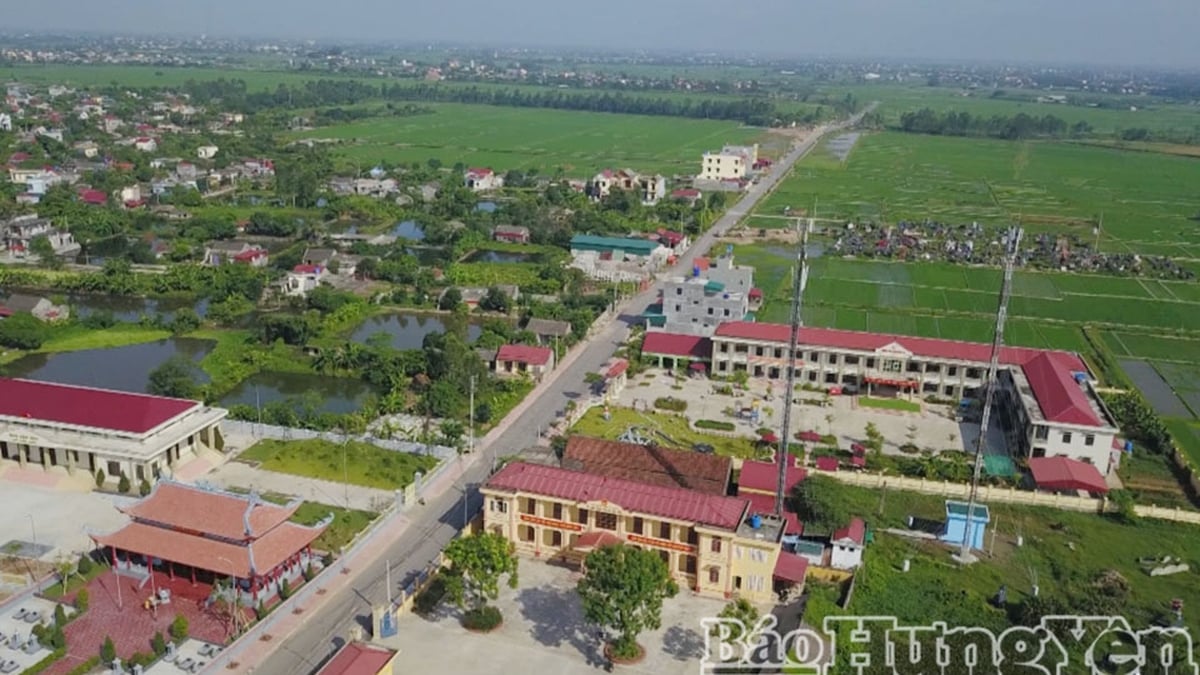
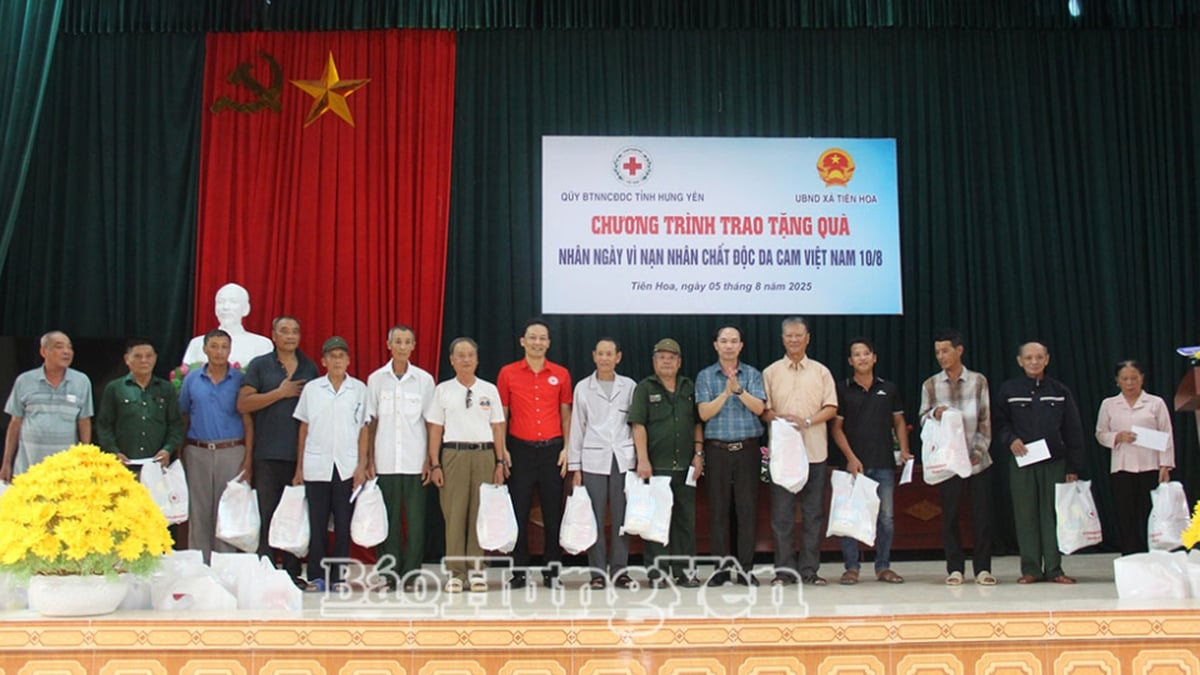















































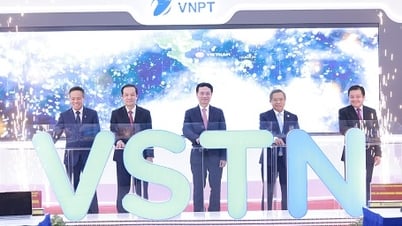

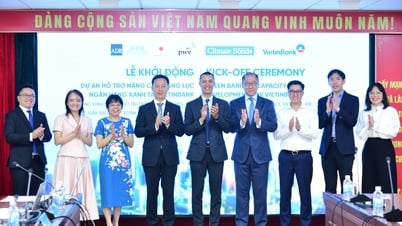


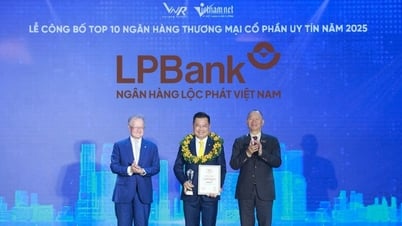





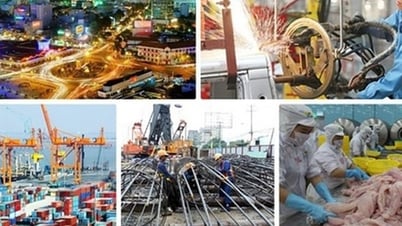

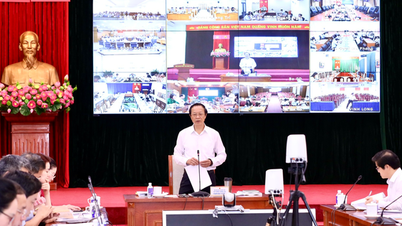
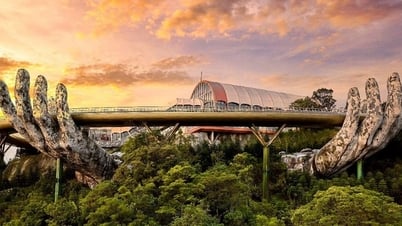



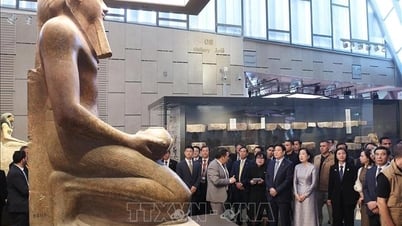

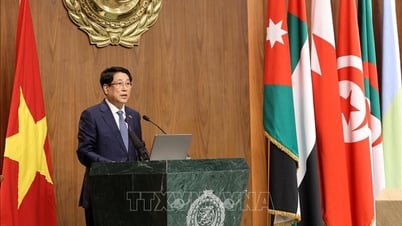
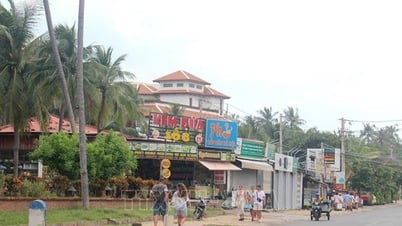




















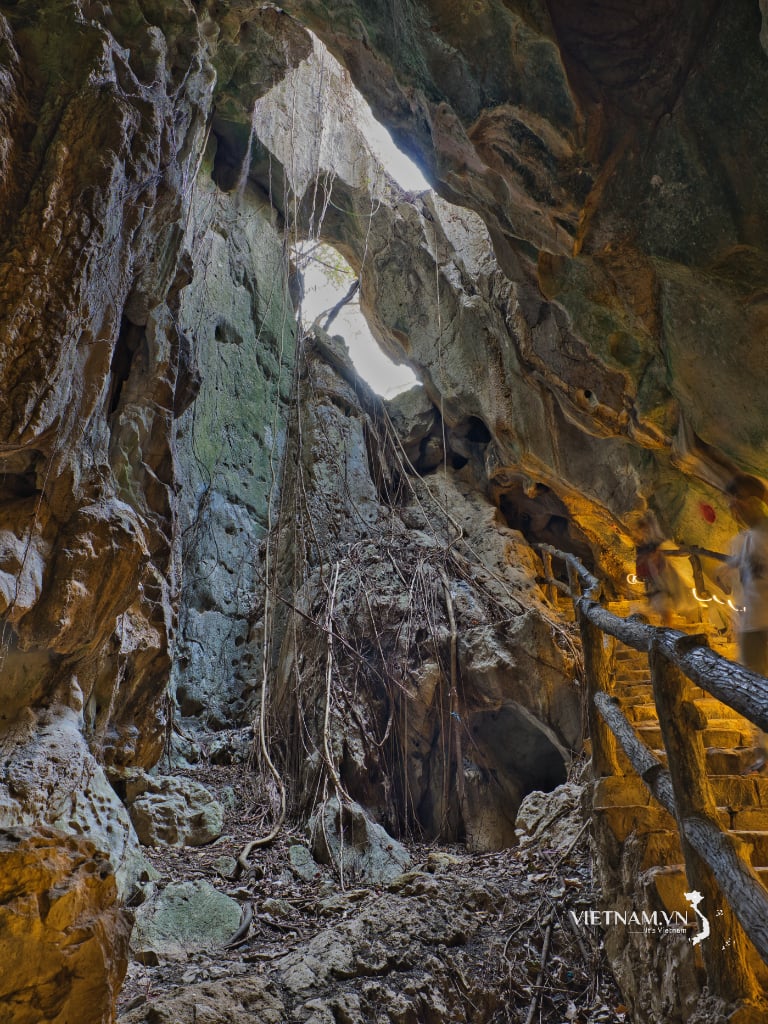
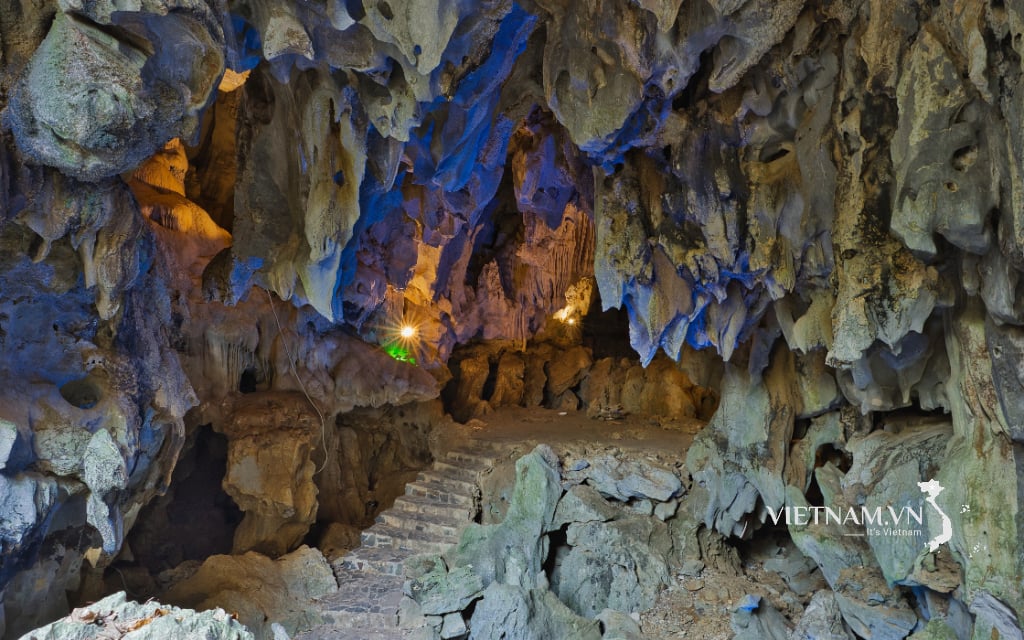
Comment (0)